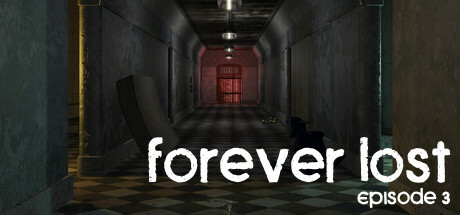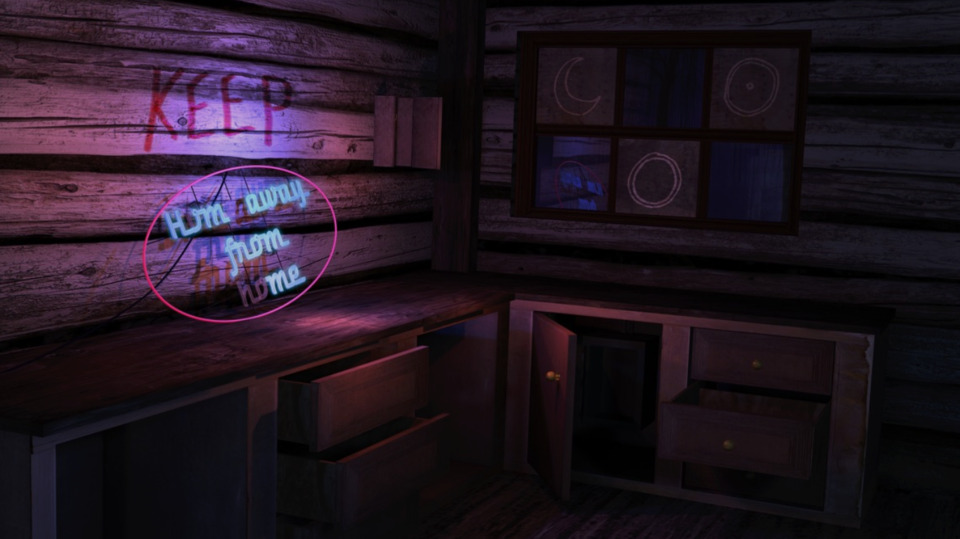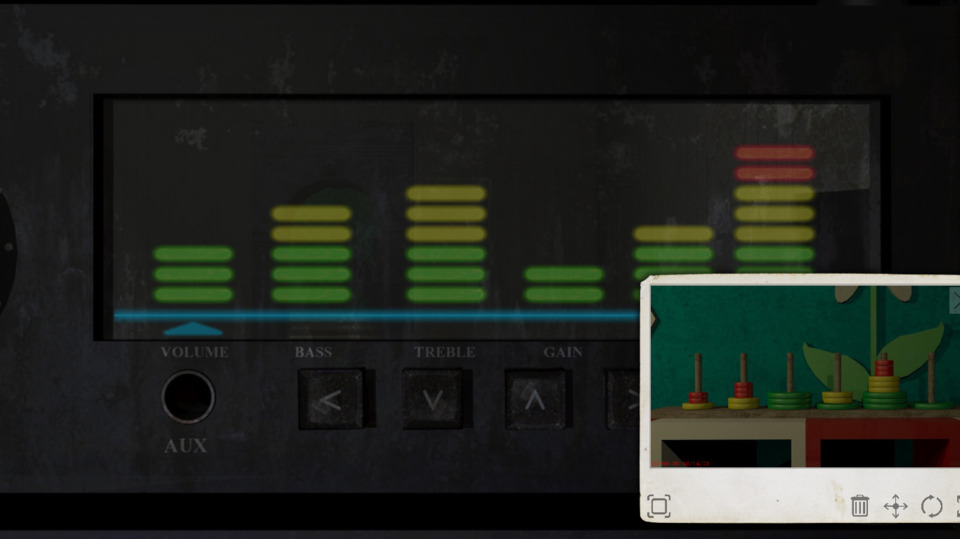Indie Game of the Week 241: Forever Lost: Episode 3
By Mento 1 Comments

It's Halloween month, which means it's time to revisit the moody puzzle-adventure series Forever Lost for one last spin around the perplexing, multi-symbolled block. I first tried this series back in August of last year with IGotW #183 after picking up the whole trilogy of episodes in that big Summer Itch.io charity bundle, moving onto the second episode in that same year's Halloween-themed feature The Itchy, Tasty Spooktathlon, and my impressions of Forever Lost as a whole haven't really shifted since then with the conclusion of Forever Lost: Episode 3, its third and final episode. Forever Lost presents an amnesiac hero wandering the halls of a disused mental health facility, and later the surrounding buildings, as they desperately try to figure out who they are and whom trapped them there by completing one hindersome puzzle after another. It's very much of the Myst lineage if in spirit alone, or perhaps the many Escape Room sims available on mobile devices, with tidbits of lore scattered around the more puzzle-centric clues and hints adorning the game's many walls and notepads.
Forever Lost: Episode 2 ended by deepening the central enigma behind the protagonist's identity and the reason they're trapped here, suggesting that the tragic end to a marriage is key to the mystery, and the third episode works to wrap everything up to conclude the story as a trilogy. I was only half paying attention to the story in previous instalments and have mostly forgotten most of it a year later, but even as a standalone Episode 3 does a fine job quickly getting you back up to speed as to who all these important people might be and lays all its cards out on the table, figuratively and literally in one puzzle's case. Determining the protagonist's identity from all the various proper nouns being bandied around wasn't the most challenging riddle to solve, but the game did end in an intriguing enough way to justify any investment in its thin plot.

As ever, the traits that held the greatest significance to me were the nature of the puzzles and the convenience of the game's user interface and quality of life features. In one specific way the game felt a like a step back from the second game: the conspicuous absence being the second chapter's elaborate hint system that was written in a loose Q&A format to minimize the risk of seeing solutions you weren't looking to have spoiled. It must've been a tricky method to deliver the very specific advice players needed if the developer dropped it for what is probably the most challenging of the three games. Episode 3 does, however, retain the ingenious camera/photo album information-gathering feature from previous games and has expanded its utility by including a "picture-in-picture" feature that allows you to refer back to saved images and scribbled overlying notes while simultaneously looking at the specific puzzle to which they pertain. I could, for instance, see a pattern of colors on a wall, snap a quick photo, then bring that image up when I find a similar interface awaiting a specific sequence and imitate the pattern without relying on my terrible memory. The format of the game's puzzles and how their hints could be many screens away from where they can be solved encourages the player to take photos of anything odd in case it relates to a future puzzle (as well as the puzzles themselves - for instance a peculiarly-shaped indent waiting for an item you may have just picked up). The album can then be pruned once you've solved puzzles related to those images for the sake of keeping things tidy, essentially working like a second inventory.
The third episode's difficulty largely relates to how expansive its map becomes after you've been playing a while. Chapter breaks usually arrive once you've opened a door to another large zone, or group of screens to visit, but these new areas are often meant to be compounded with all those you've found so far; to explain what I mean, you'll open up a new region only to find key items and hints relating to puzzles you abandoned unsolved half the game ago. Though the game is only about four or five hours long, it's easy to forget what was left behind in earlier sections unless you're impulsively taking photo evidence and the game even tricks you a few times by letting you think a puzzle is over when in fact it still has some part to play. An example of this, spoiler-blocked if you want to go into this game completely fresh, involves the following:

The game still has some issues regarding the convenience of getting around. The game world is quite large and many screens are arranged in a linear order, so without a fast travel system or a map it can take a while to return to some specific spots at the end of long chains of rooms or remember which domicile has the particular kitchen area you need to find for a puzzle. Another issue that extends to the whole series is a lack of any sort of compass navigation, that is to say letting you know which directions on any given screen are connected to other screens. A compass or a mini-map or even opaque arrows that highlight nearby exits is a feature that has existed in this genre since the MacVenture series of the late '80s, so its absence in modern point-and-click adventure games like this seems conspicuous and unfortunate. Unless you make sure to tap every doorway, hallway, and edge of the screen in case it takes you to a new area it can be easy to miss whole zones with vital hints and items.
Overall I think I enjoyed the puzzles a bit more in this third chapter, including some that recontextualized some of the wall messages I'd seen so far from useless graffiti to something of actual importance; realizations that only come late in the game, after you've passed by most of the related messages. It also has something that those HOPAs or something like The Room series has where you can start a chain reaction of puzzle solutions by finding one vital item as a reward after the next, which can be very satisfying if you've been staring at those puzzles for a while. I wish the developer could've implemented more ways to make the game easier or at least more transparent in terms of navigating its world, and it feels like the same bugs continue to appear from episode to episode (it has a real bee in its bonnet about accidentally registering double-clicks, frequently skipping screens in the process), but if you liked the first two episodes the third works as a steady progression in difficulty and gives you all the plot-related answers you were looking for so I'd say it succeeds in that goal at least.
Rating: 3 out of 5.
| < Back to 240: Symphonia | The First 100 | The Second 100 | > Forward to 242: Robot Wants It All |
